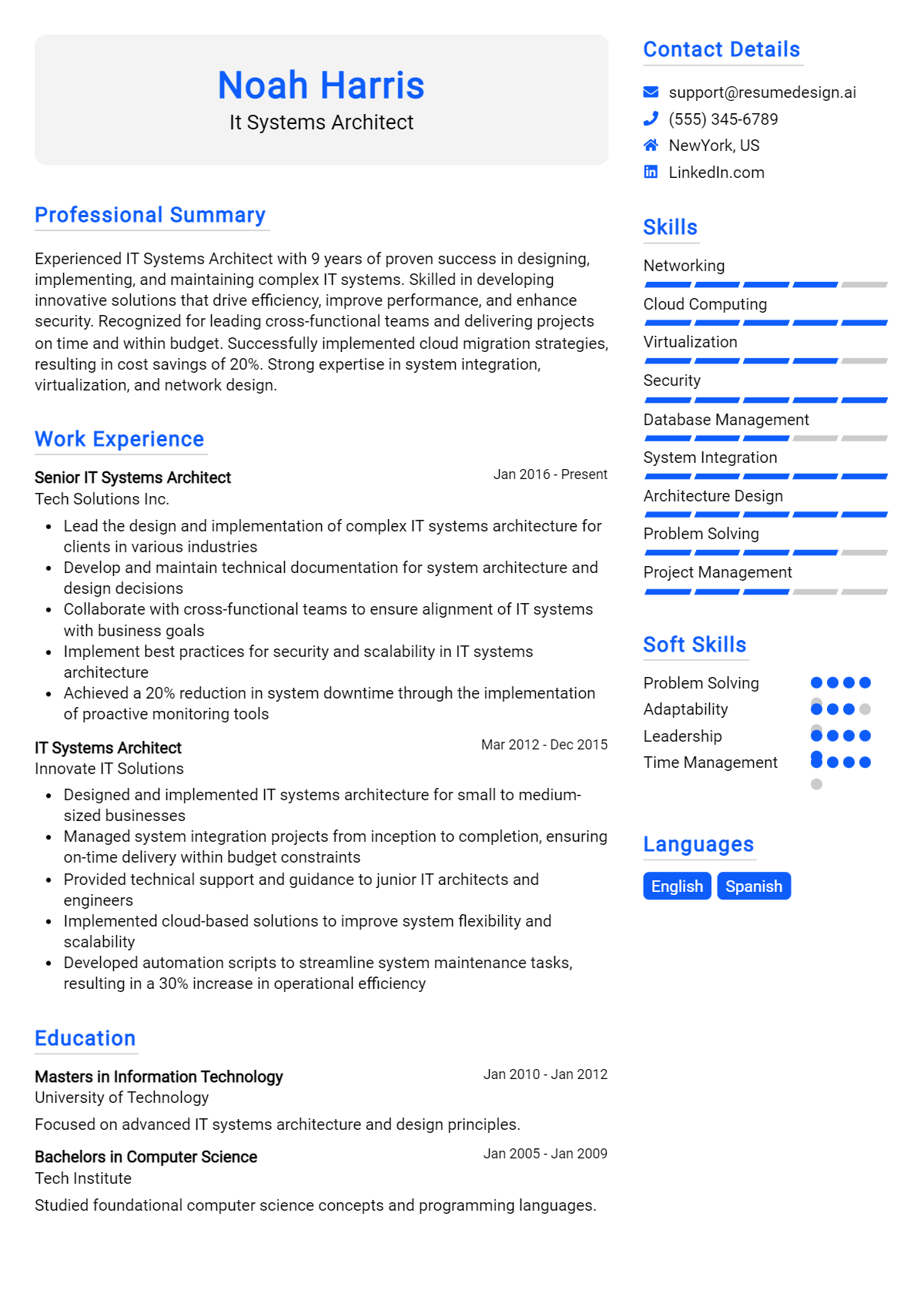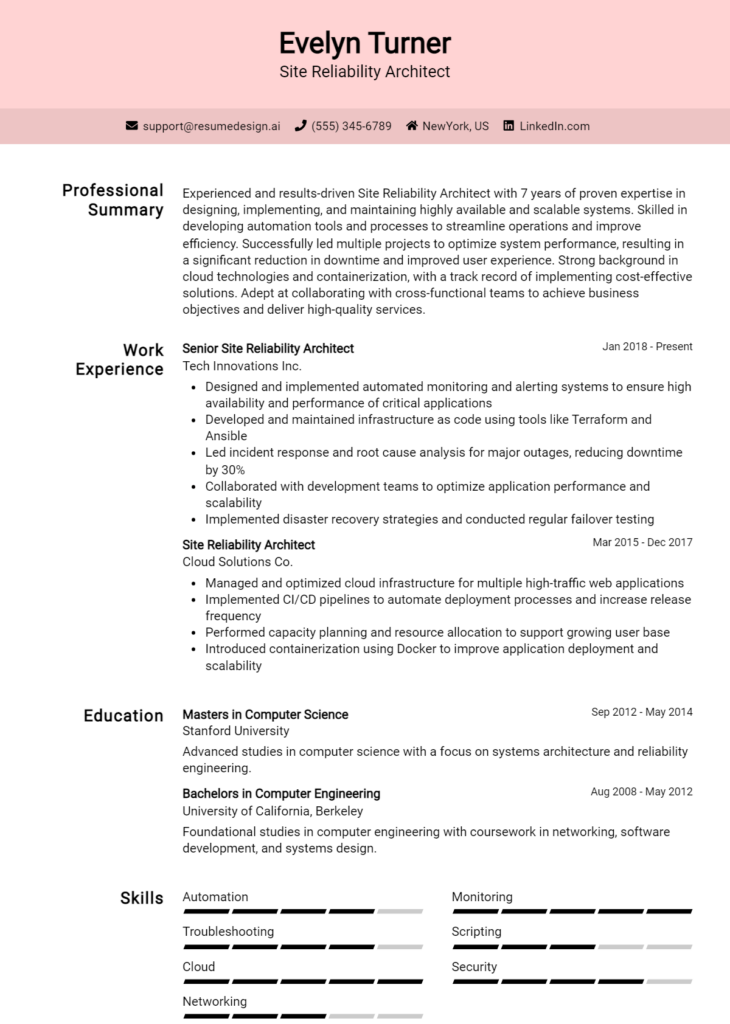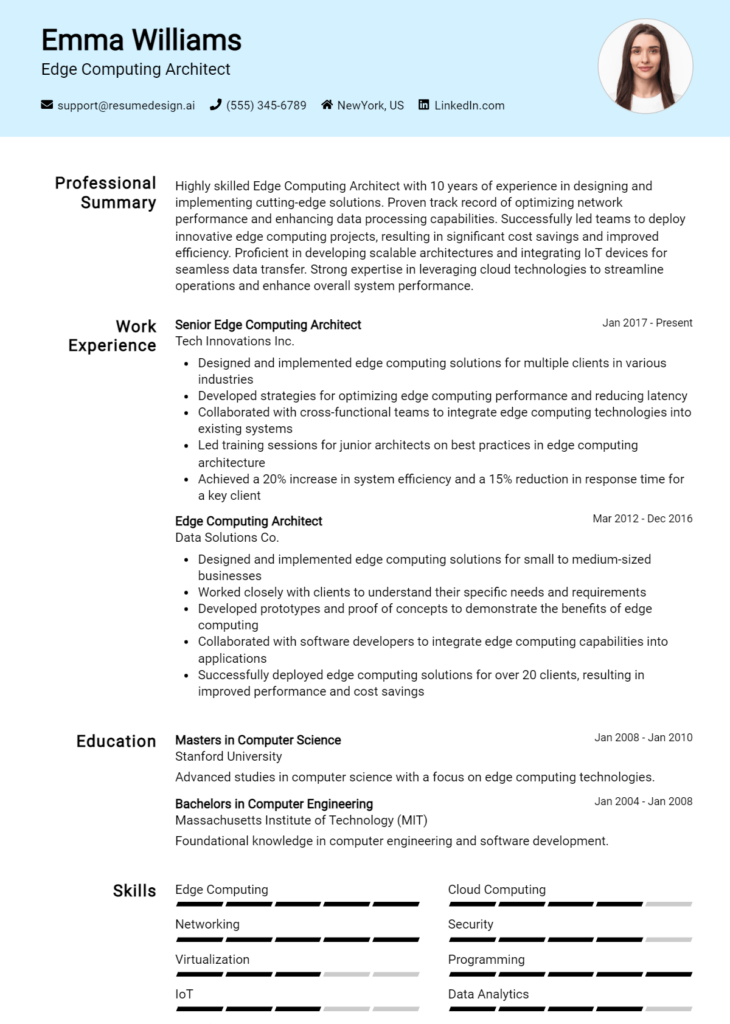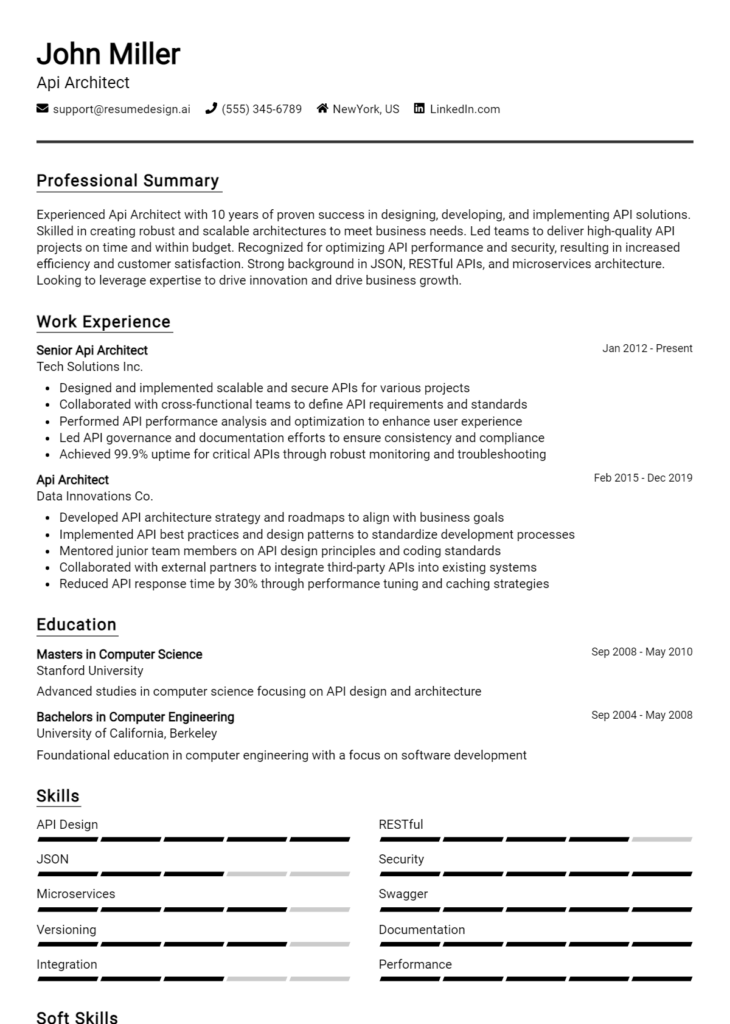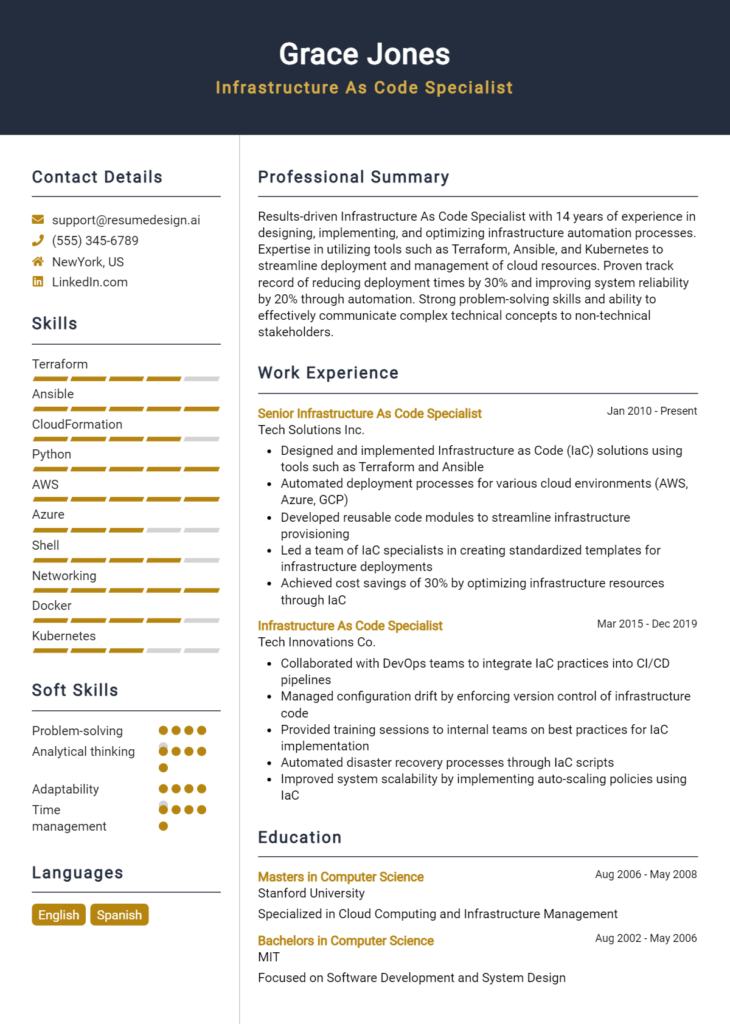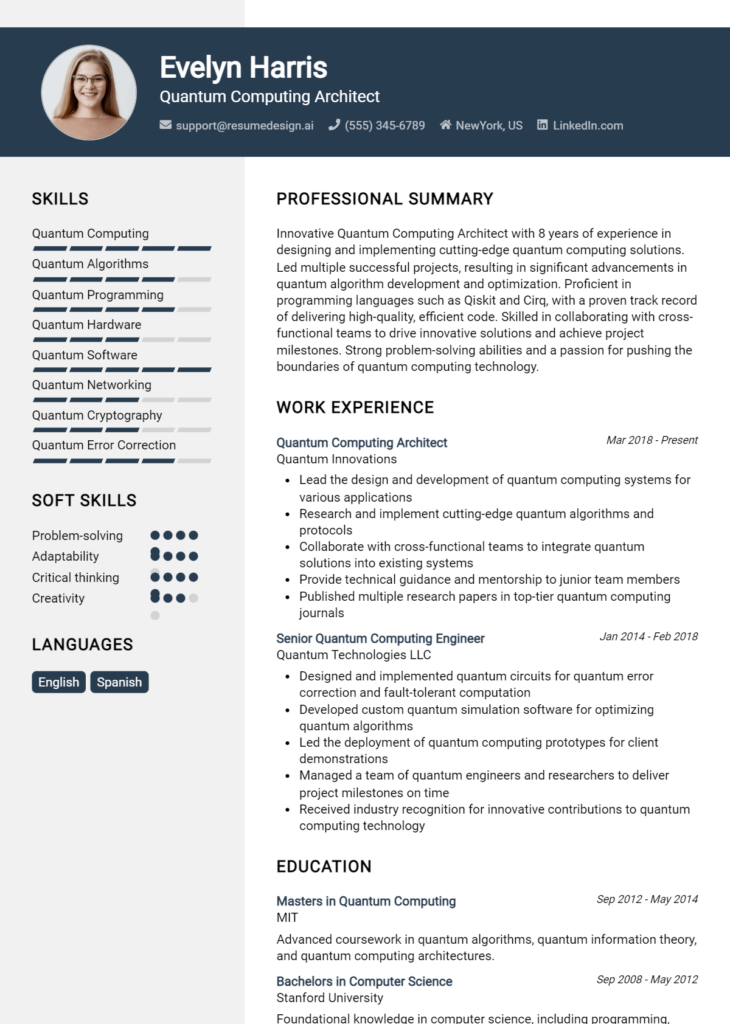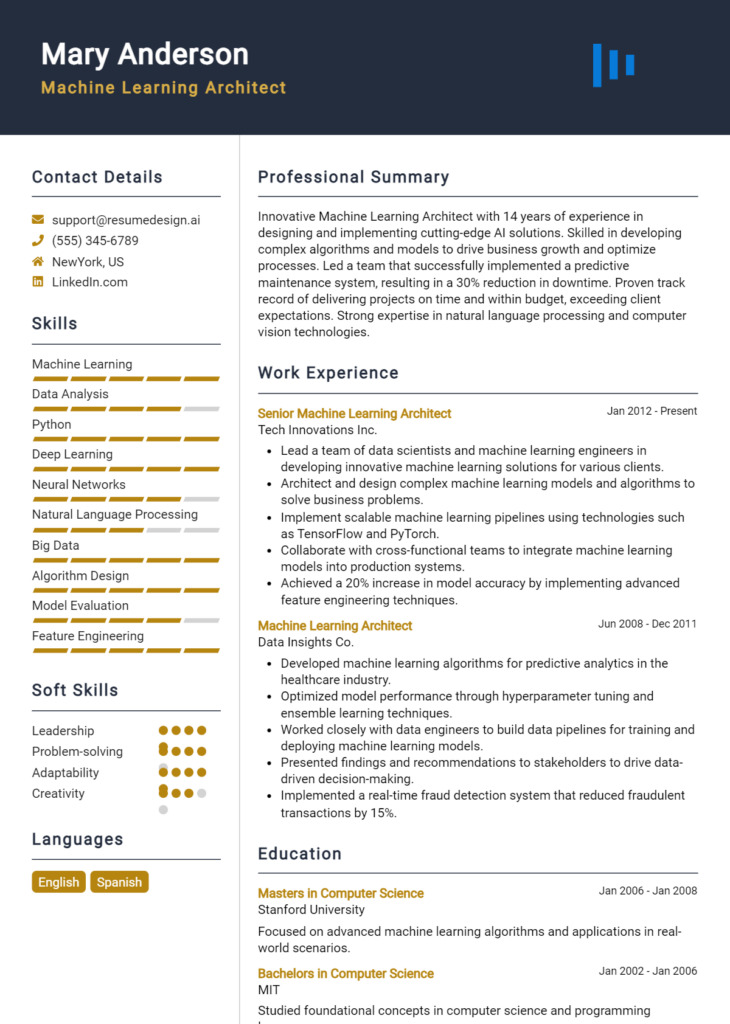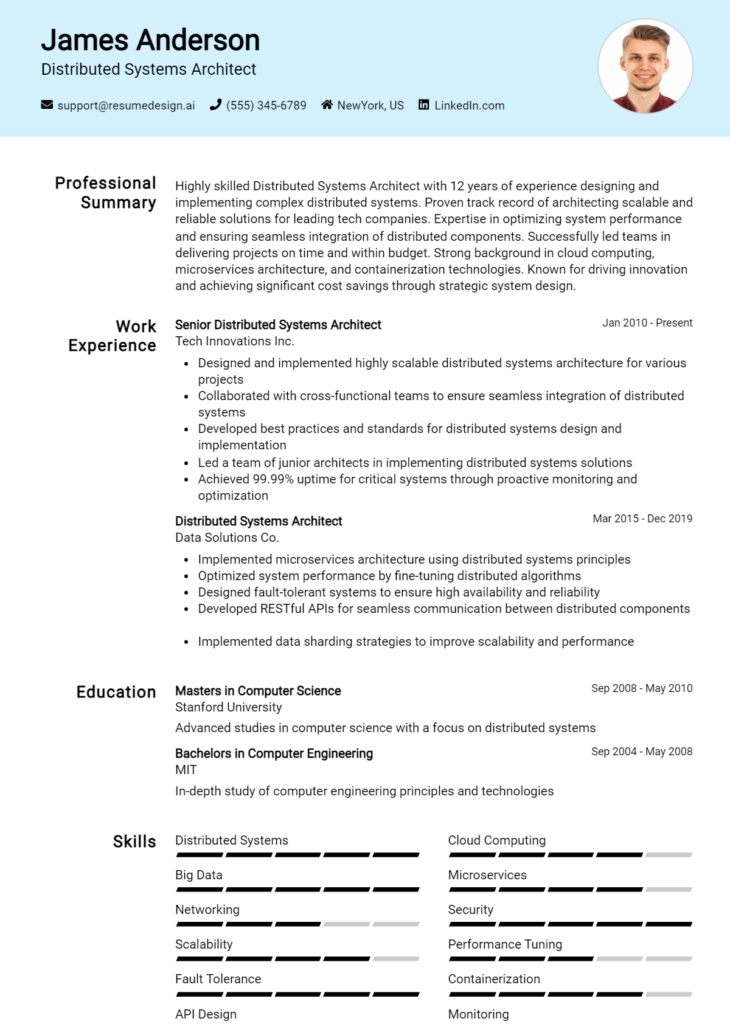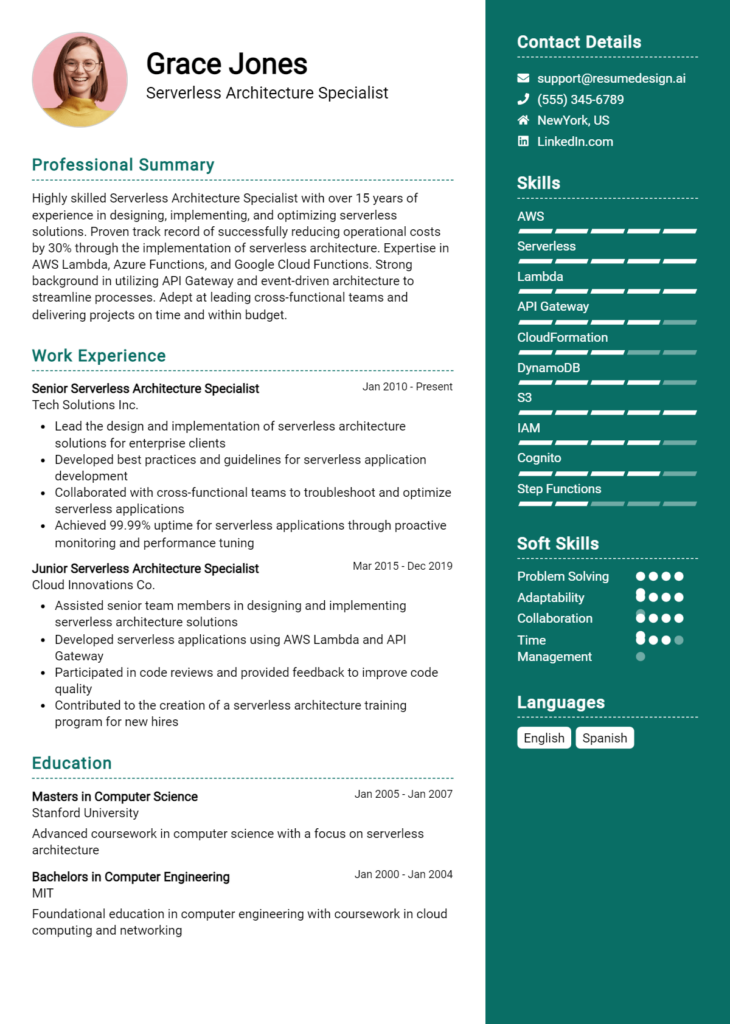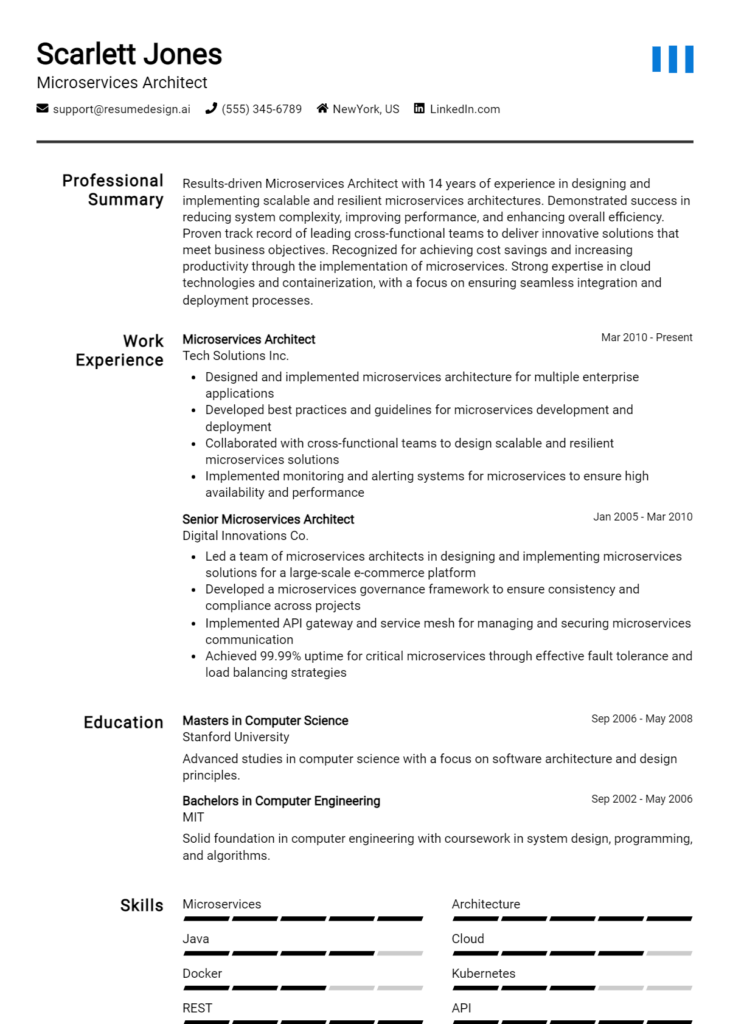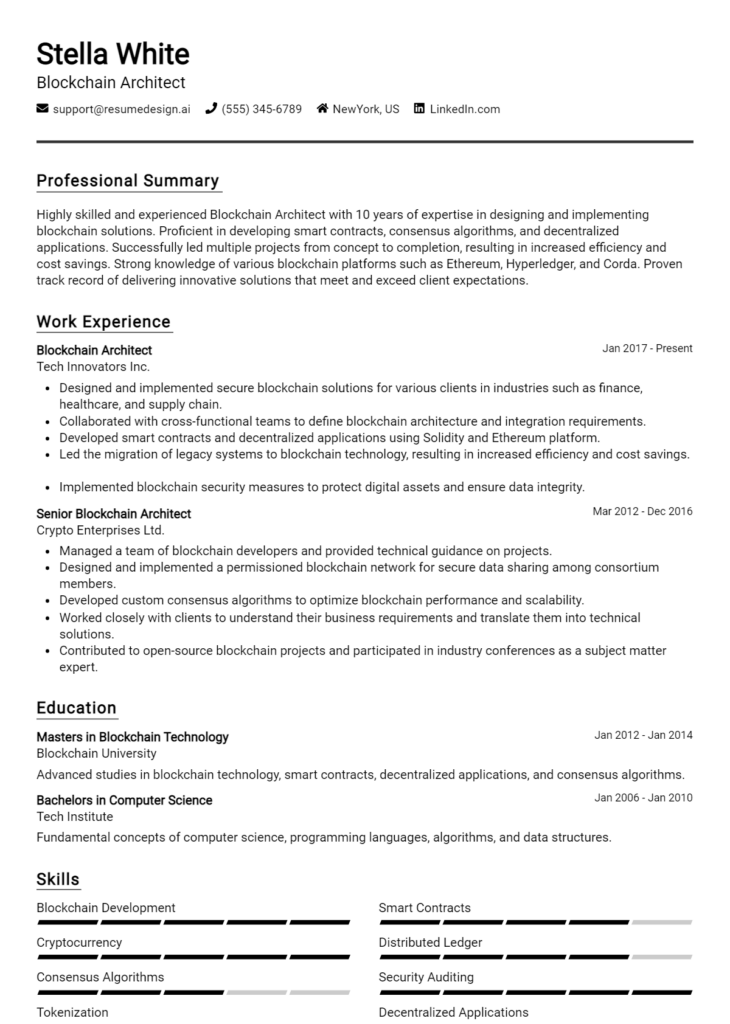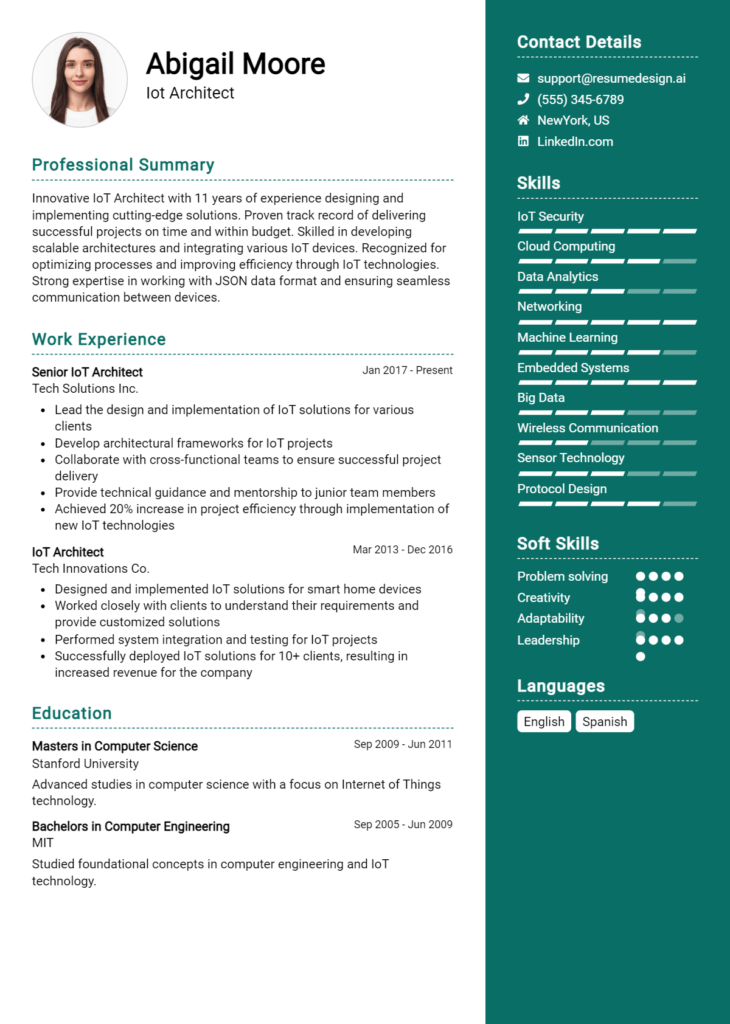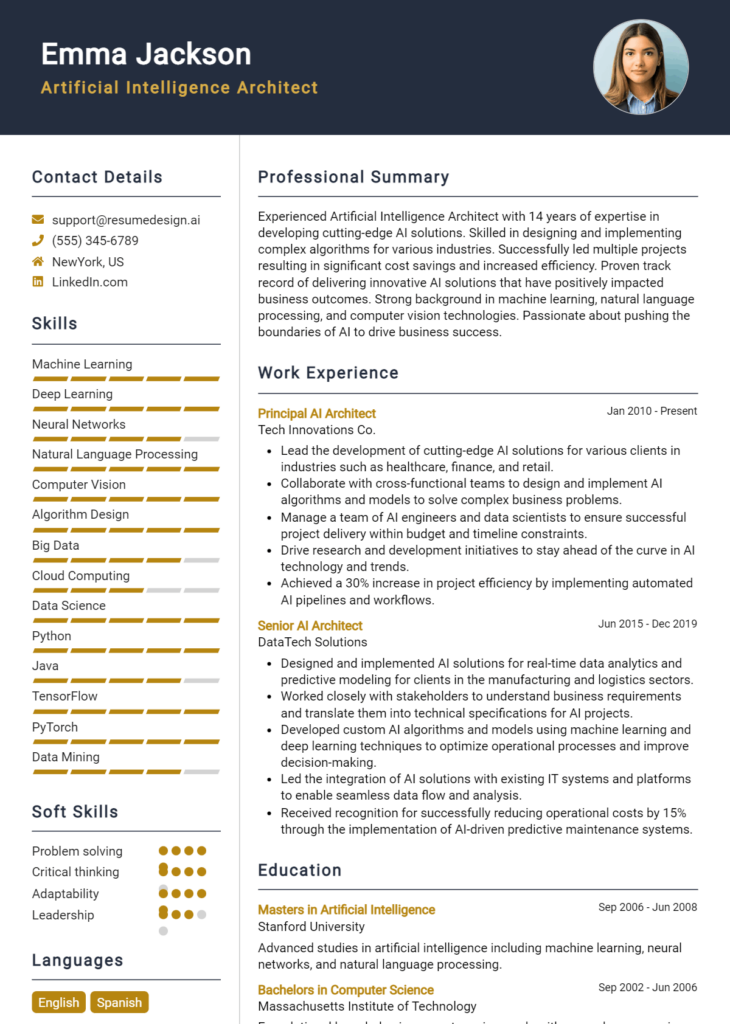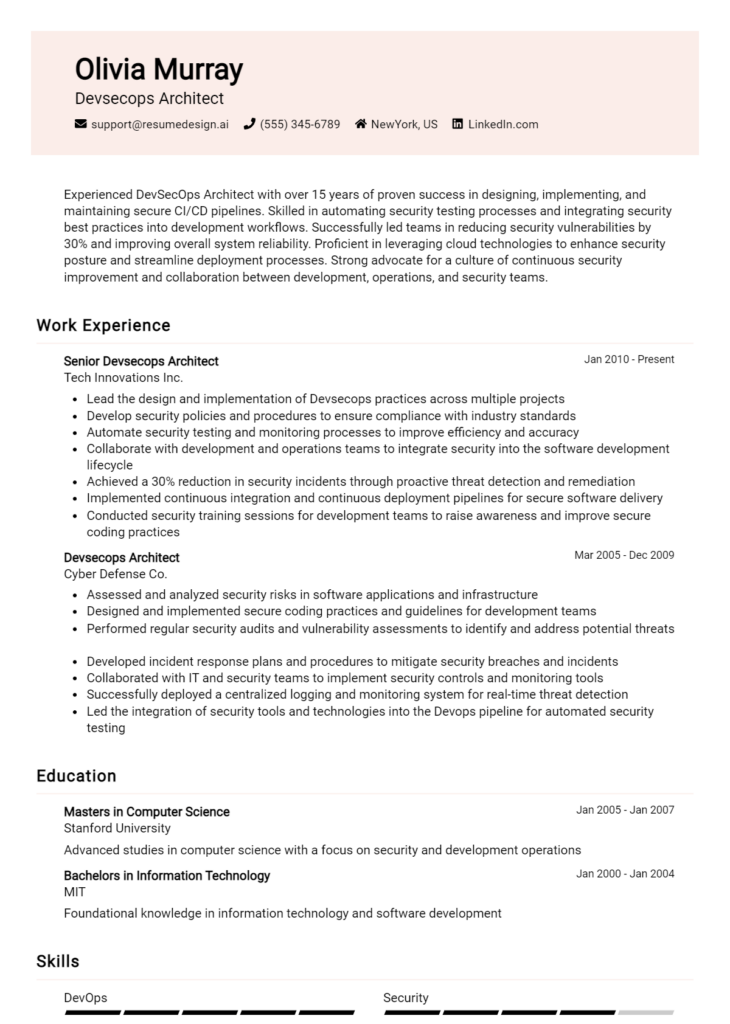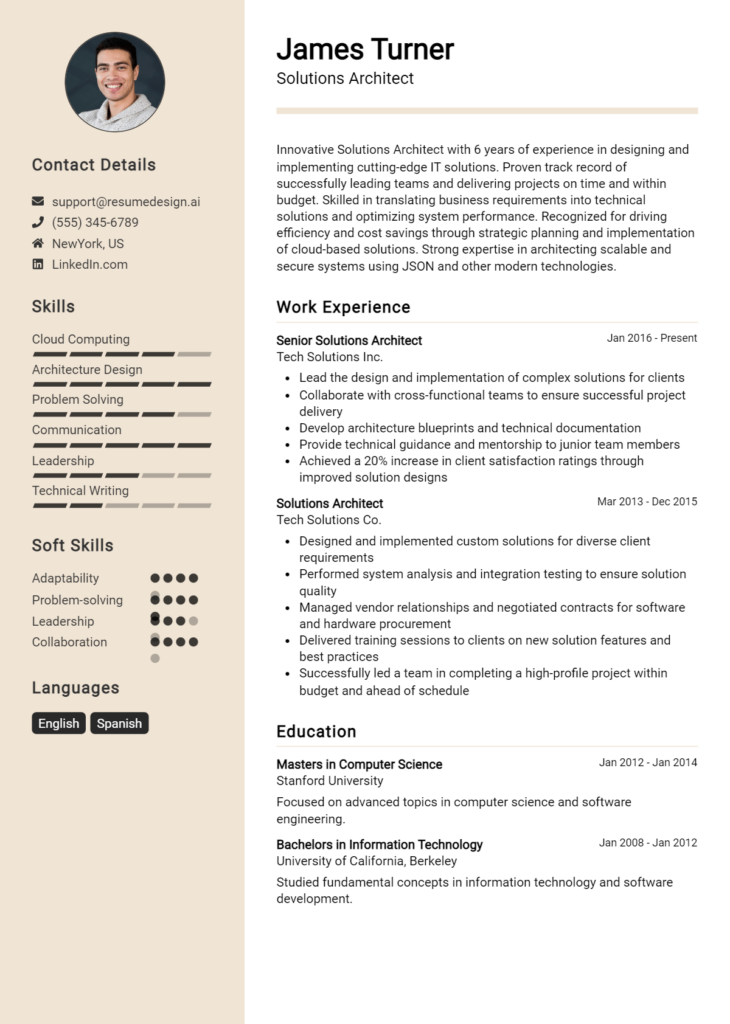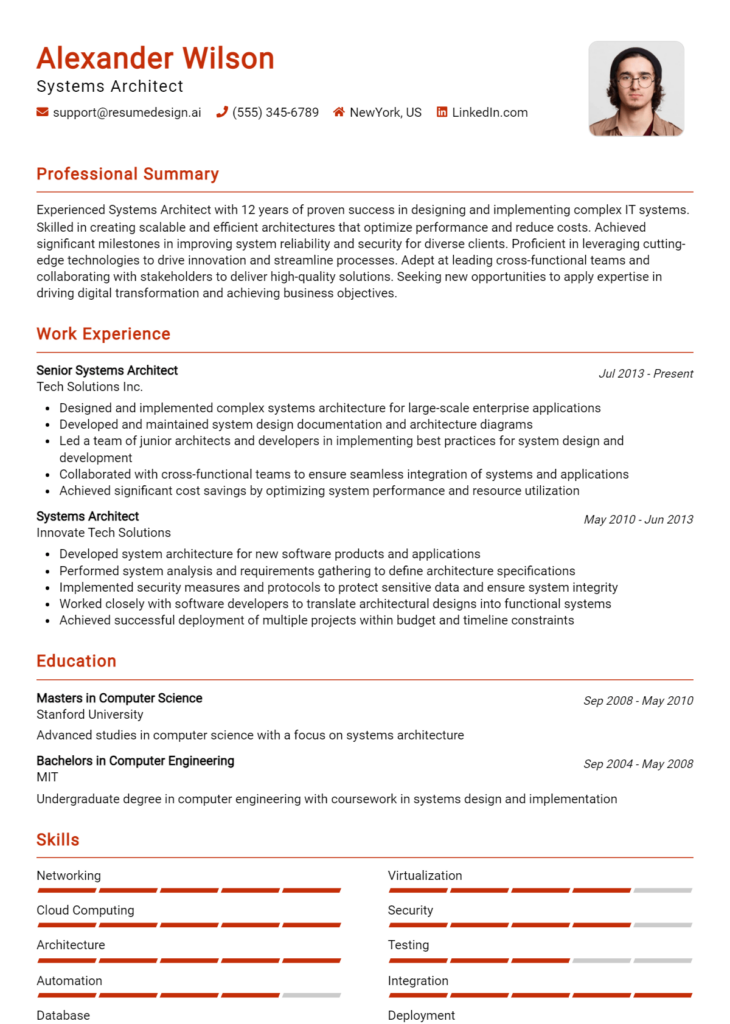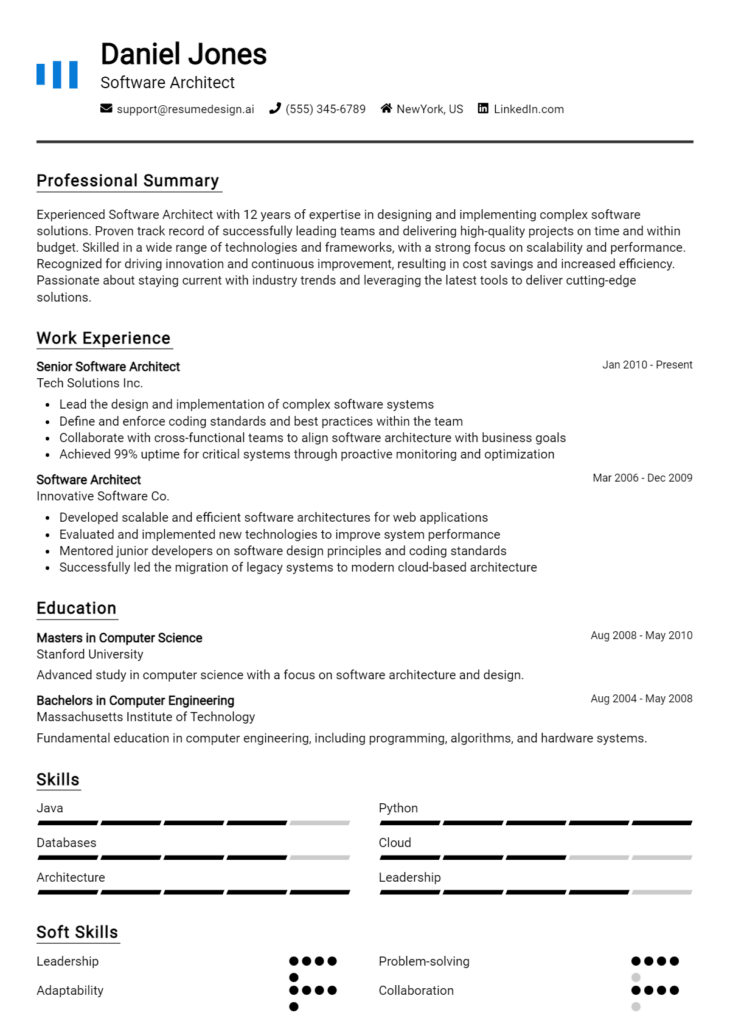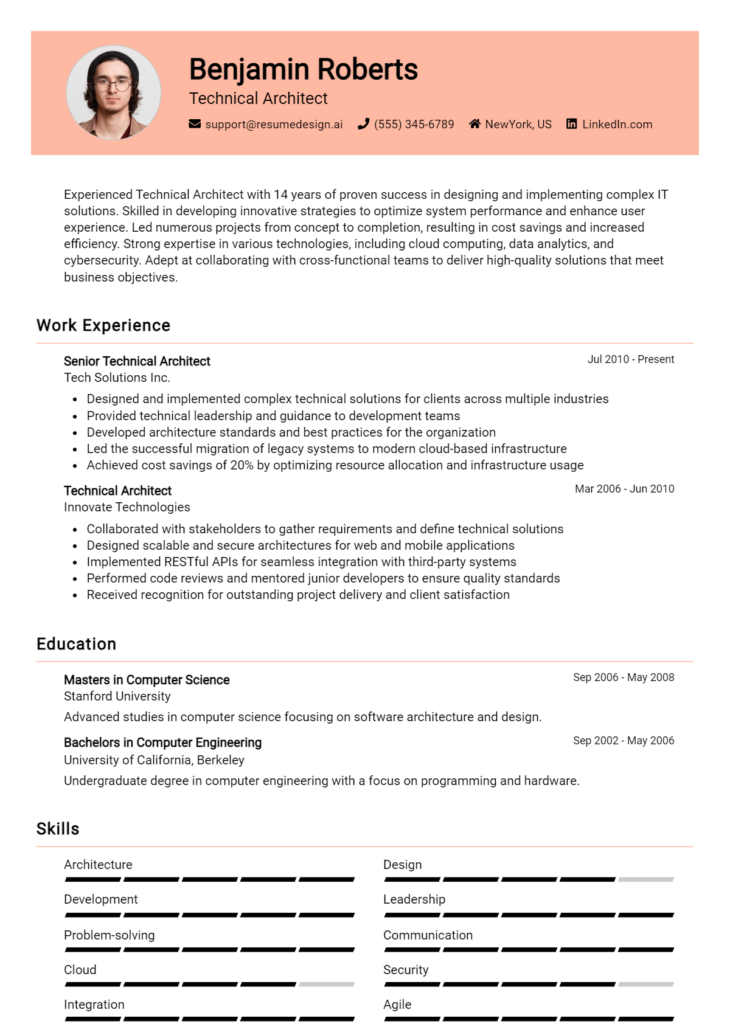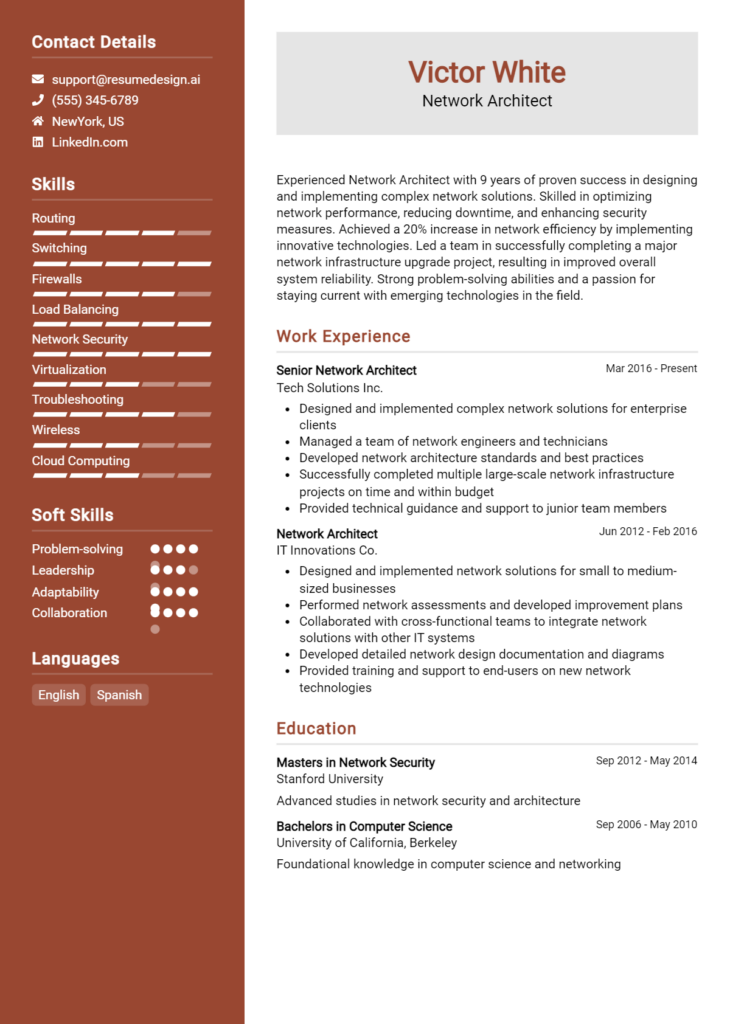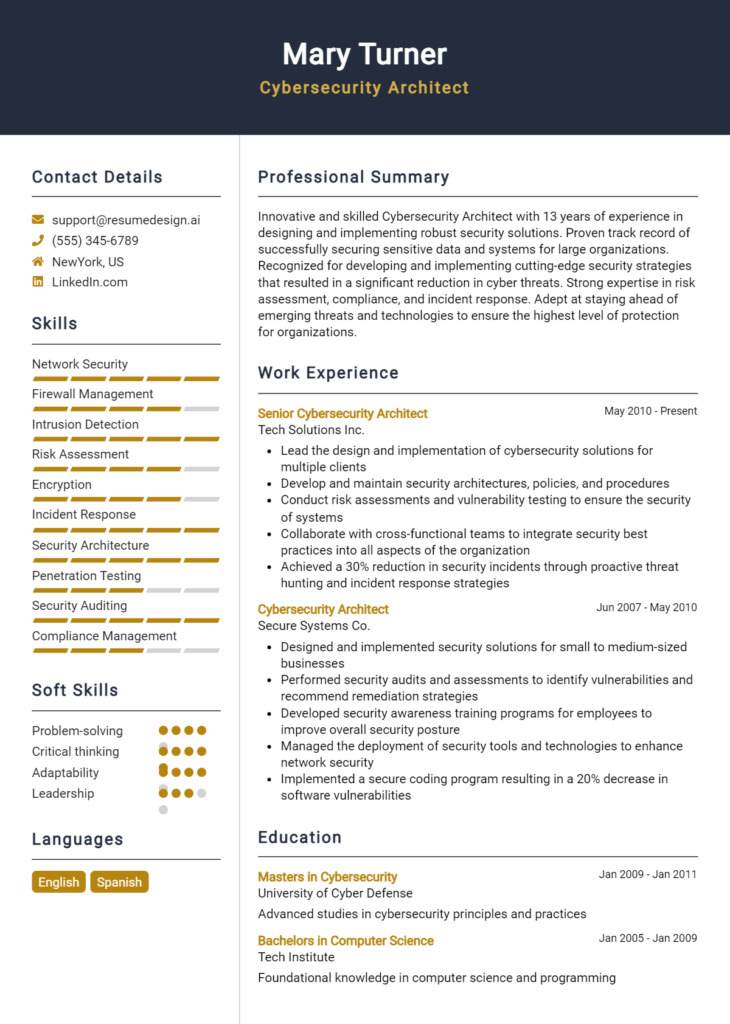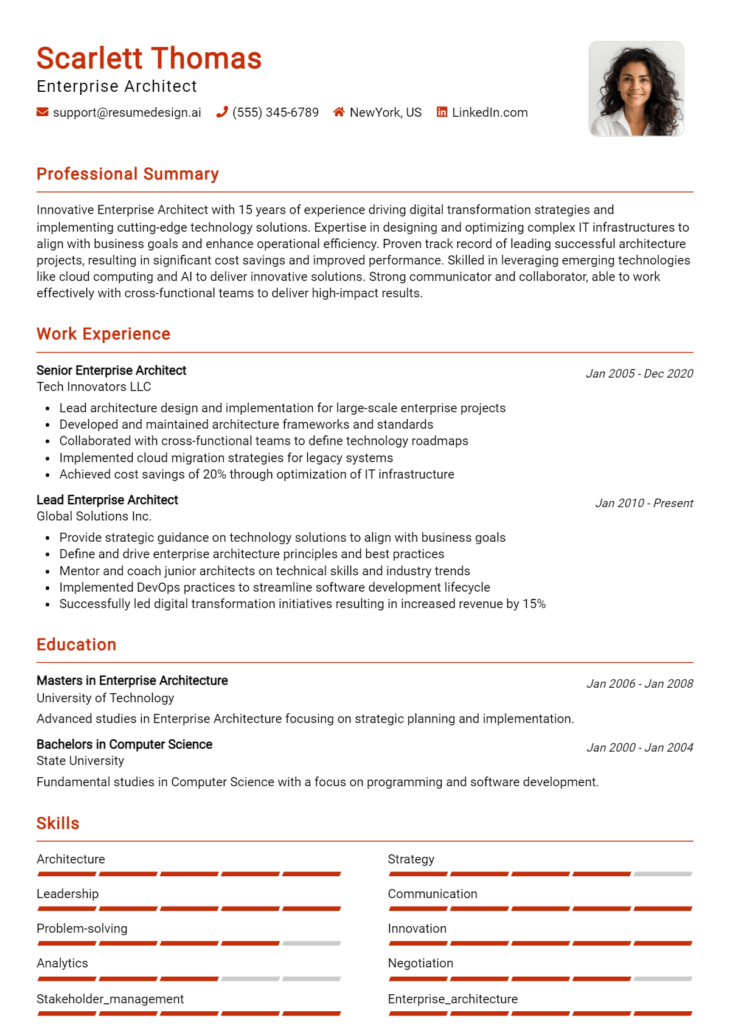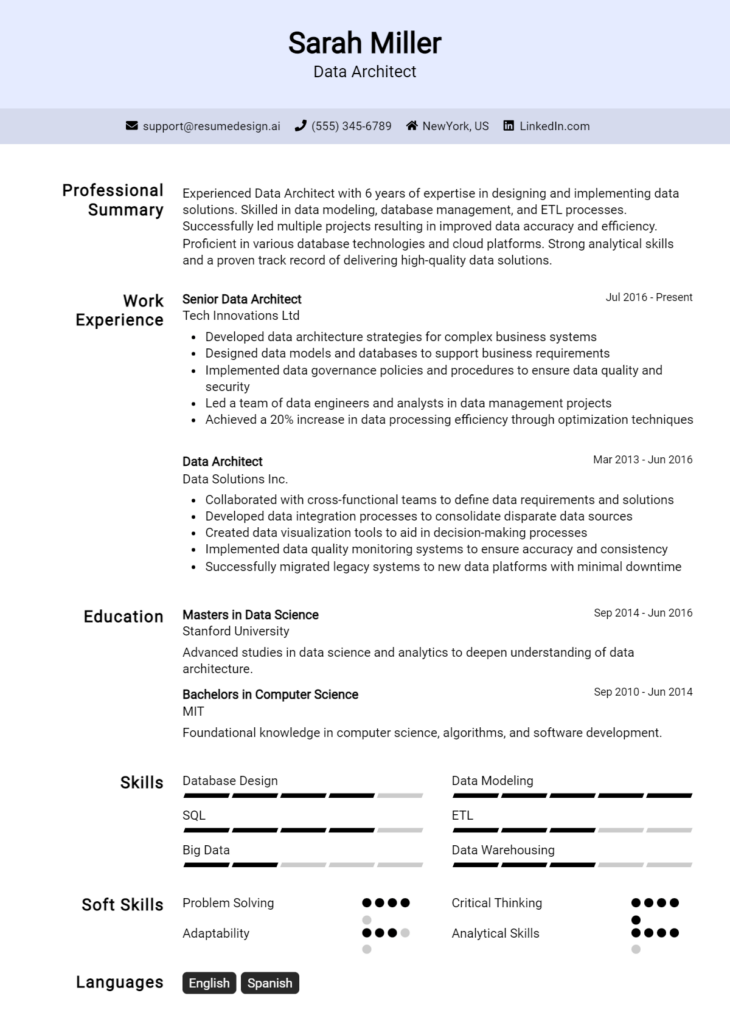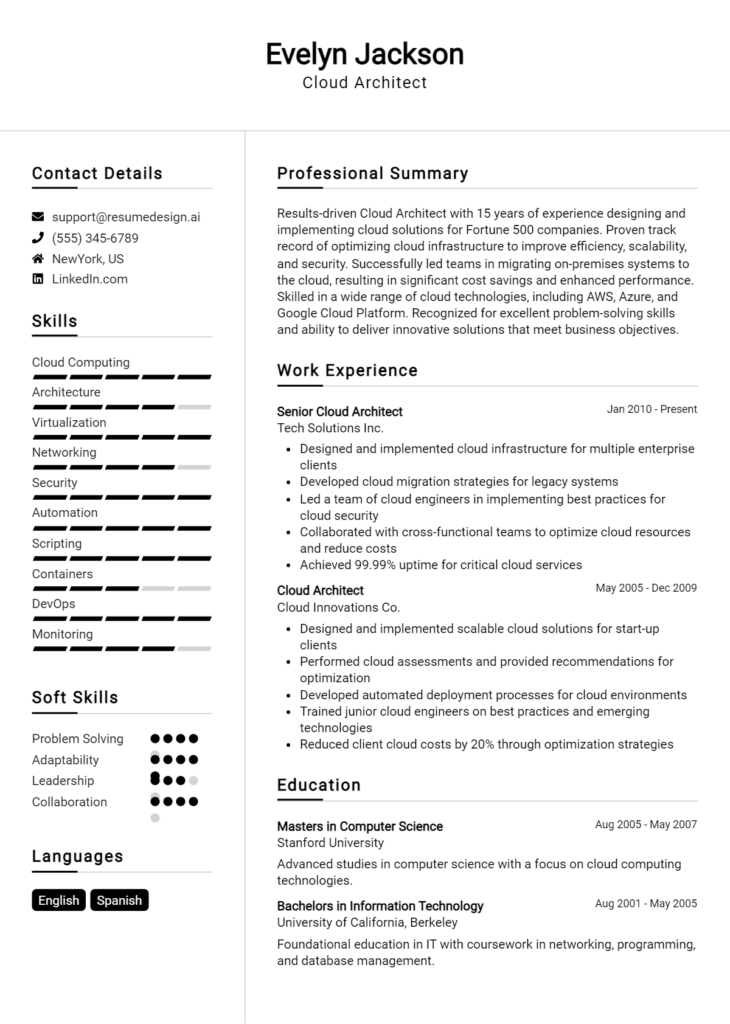IT Systems Architect Core Responsibilities
An IT Systems Architect plays a crucial role in designing and implementing complex technological solutions that align with organizational goals. This professional bridges various departments, ensuring seamless communication and integration of systems. Key responsibilities include assessing technical requirements, developing architecture frameworks, and collaborating with stakeholders. Essential skills encompass strong analytical abilities, operational insight, and advanced problem-solving techniques. A well-structured resume highlighting these qualifications is vital for demonstrating expertise and attracting potential employers.
Common Responsibilities Listed on IT Systems Architect Resume
- Design and implement scalable IT architecture solutions.
- Collaborate with cross-functional teams to define system requirements.
- Evaluate and select appropriate technologies for projects.
- Develop and maintain documentation for architecture design.
- Ensure system security and compliance with industry standards.
- Conduct risk assessments and mitigation strategies.
- Oversee system integration and data migration processes.
- Provide technical leadership and mentorship to team members.
- Monitor system performance and optimize resources.
- Stay updated with emerging technologies and trends.
- Facilitate stakeholder meetings to gather and discuss requirements.
- Support project management activities and timelines.
High-Level Resume Tips for IT Systems Architect Professionals
A well-crafted resume is essential for IT Systems Architect professionals, as it often serves as the first impression a candidate makes on potential employers. In a competitive job market, your resume must effectively reflect not just your technical skills and experience, but also your key achievements in the field. A strong resume can set you apart from other candidates, allowing you to showcase your ability to design and implement complex systems that meet organizational needs. This guide will provide practical and actionable resume tips specifically tailored for IT Systems Architect professionals, ensuring that your application stands out to hiring managers and recruiters.
Top Resume Tips for IT Systems Architect Professionals
- Tailor your resume to the specific job description by using relevant keywords and phrases.
- Highlight your most relevant experience, focusing on projects that demonstrate your systems architecture skills.
- Quantify your achievements with metrics, such as improved system performance or cost savings.
- Include industry-specific skills, such as cloud computing, cybersecurity, and enterprise architecture frameworks.
- Utilize a clean and professional format that makes it easy for recruiters to scan your resume quickly.
- Showcase your certifications, such as TOGAF, AWS Certified Solutions Architect, or similar qualifications.
- Incorporate a summary statement that encapsulates your core competencies and career goals.
- Emphasize collaboration and communication skills, as these are crucial for working with cross-functional teams.
- Include relevant tools and technologies you are proficient in, such as DevOps tools, databases, or programming languages.
Implementing these tips can significantly increase your chances of landing a job in the IT Systems Architect field. By presenting a resume that is not only well-structured and tailored to the role, but also rich in accomplishments and relevant skills, you will create a compelling narrative that resonates with potential employers, ultimately enhancing your likelihood of securing an interview and advancing your career.
Why Resume Headlines & Titles are Important for IT Systems Architect
In the competitive field of IT Systems Architecture, crafting a compelling resume headline or title is crucial for standing out to hiring managers. A strong headline serves as a powerful first impression, immediately capturing attention and summarizing a candidate's key qualifications in a succinct phrase. The right title can highlight relevant skills, experiences, and accomplishments, setting the stage for the rest of the resume. It should be concise, directly related to the position being applied for, and tailored to reflect the specific requirements of the job, ensuring that it resonates with hiring professionals seeking the ideal candidate.
Best Practices for Crafting Resume Headlines for IT Systems Architect
- Keep it concise: Aim for one impactful phrase rather than a lengthy sentence.
- Be role-specific: Tailor your headline to the specific position you are applying for.
- Highlight key skills: Focus on your most relevant skills and experiences that align with the job description.
- Use industry keywords: Incorporate terminology commonly used in the IT Systems Architecture field.
- Showcase achievements: Mention notable accomplishments that demonstrate your value as a candidate.
- Avoid vague language: Steer clear of generic phrases that do not provide specific information about your capabilities.
- Maintain professionalism: Ensure the tone is appropriate for the industry while still reflecting your unique personality.
- Align with your career goals: Your headline should reflect your aspirations and the direction you want to take in your career.
Example Resume Headlines for IT Systems Architect
Strong Resume Headlines
Innovative IT Systems Architect with 10+ Years of Experience in Cloud Solutions and Infrastructure Design
Results-Driven IT Systems Architect Specializing in Scalable Network Architecture and Security Solutions
Dynamic IT Systems Architect with Proven Track Record in Delivering High-Performance Systems for Fortune 500 Companies
Weak Resume Headlines
IT Professional Looking for a New Job
Experienced in IT Systems
The strong headlines are effective because they provide a clear and specific snapshot of the candidate's qualifications and focus on relevant skills and accomplishments that align with the job description. In contrast, the weak headlines lack specificity and fail to convey any meaningful information about the candidate's abilities or the value they bring to the role, making them less likely to capture the interest of hiring managers.
Writing an Exceptional IT Systems Architect Resume Summary
In the competitive field of IT Systems Architecture, a well-crafted resume summary is essential for making a strong first impression on hiring managers. This brief yet powerful section serves as an introduction to your qualifications, quickly capturing attention by highlighting key skills, relevant experience, and notable accomplishments. A compelling summary not only showcases your expertise but also sets the tone for the rest of your resume. It should be concise and impactful, tailored specifically to the job you are applying for, ensuring that it resonates with the employer’s needs and priorities.
Best Practices for Writing a IT Systems Architect Resume Summary
- Quantify achievements: Use numbers and metrics to illustrate your impact, such as project completion times or cost savings.
- Focus on relevant skills: Highlight technical skills and soft skills that are directly applicable to the role.
- Tailor the summary: Customize your summary for each job application, incorporating keywords from the job description.
- Be concise: Aim for 3-5 sentences that deliver your message clearly and succinctly.
- Showcase industry knowledge: Mention specific methodologies or technologies you are proficient in.
- Emphasize problem-solving abilities: Highlight your capacity to design solutions that address complex issues.
- Include certifications: Mention any relevant certifications that enhance your credibility as an architect.
- Reflect your career goals: Indicate how your aspirations align with the company’s mission or projects.
Example IT Systems Architect Resume Summaries
Strong Resume Summaries
Detail-oriented IT Systems Architect with over 10 years of experience in designing scalable solutions that have reduced system downtime by 30%, resulting in improved operational efficiency. Skilled in cloud architecture and agile methodologies, with a proven track record of leading cross-functional teams to successful project completion.
Innovative IT Systems Architect with expertise in enterprise-level architecture and a history of optimizing system performance, achieving a 25% reduction in operational costs. Proficient in utilizing AWS and Azure platforms, with a focus on implementing security best practices and enhancing data integrity.
Results-driven IT Systems Architect with a strong background in developing and implementing IT strategies. Successfully led a team that migrated 100+ applications to a cloud environment, increasing system availability by 40% while meeting all project deadlines.
Weak Resume Summaries
Experienced IT professional with a background in systems architecture. Capable of working on various projects and collaborating with teams.
IT Systems Architect with skills in technology and systems development. Looking for a challenging role in a dynamic environment.
The examples provided illustrate the stark contrast between strong and weak resume summaries. Strong summaries effectively quantify achievements and specify relevant skills, creating a clear picture of the candidate's capabilities and contributions. In contrast, weak summaries lack detail and specificity, making it difficult for hiring managers to gauge the applicant's qualifications or the value they could bring to the organization. A strong summary is essential for standing out in a competitive job market.
Work Experience Section for IT Systems Architect Resume
The work experience section of an IT Systems Architect resume is a crucial component that illustrates a candidate's technical skills, leadership abilities, and capacity to deliver high-quality products. This section not only highlights the practical application of technical knowledge but also demonstrates how the candidate has effectively managed teams and projects to achieve successful outcomes. Quantifying achievements with specific metrics and aligning experiences with industry standards can significantly enhance the impact of this section, showcasing the candidate's value to potential employers.
Best Practices for IT Systems Architect Work Experience
- Use clear and concise language to describe your roles and responsibilities.
- Quantify achievements with specific metrics (e.g., reduced system downtime by 30%).
- Highlight technical skills relevant to the position, such as cloud architecture or security protocols.
- Demonstrate leadership by outlining team management and project oversight experiences.
- Align your experiences with industry standards and best practices.
- Incorporate keywords from the job description to enhance relevance.
- Include examples of collaboration across departments or with stakeholders.
- Showcase continuous improvement efforts and how they benefited the organization.
Example Work Experiences for IT Systems Architect
Strong Experiences
- Led a cross-functional team to design and implement a cloud-based infrastructure, resulting in a 40% reduction in operational costs.
- Architected a new data management system that improved data retrieval times by 50%, enhancing overall system performance.
- Managed the migration of legacy systems to modern platforms, successfully completing the project 3 months ahead of schedule and under budget.
- Collaborated with software development teams to integrate security protocols, reducing vulnerabilities by 60% over a two-year period.
Weak Experiences
- Worked on IT projects that involved various technologies.
- Participated in meetings to discuss system updates and changes.
- Helped with troubleshooting issues when they arose.
- Contributed to team efforts on several occasions without specific details provided.
The examples above illustrate the difference between strong and weak experiences in an IT Systems Architect resume. Strong experiences are characterized by specific, quantifiable achievements that showcase technical leadership and effective collaboration. In contrast, weak experiences lack detail and do not provide measurable outcomes, making it difficult for potential employers to assess the candidate's impact in previous roles. By focusing on clear, quantifiable results, candidates can significantly enhance their appeal to hiring managers in the competitive IT landscape.
Education and Certifications Section for IT Systems Architect Resume
The education and certifications section of an IT Systems Architect resume is critical in demonstrating a candidate's academic foundation and professional qualifications. This section serves as a testament to the candidate's commitment to continuous learning and adaptation in the ever-evolving tech landscape. By highlighting relevant degrees, industry-recognized certifications, and specialized training, candidates can significantly enhance their credibility and showcase their alignment with the demands of the job role. A well-structured education and certifications section not only illustrates a candidate's knowledge and expertise but also reflects their dedication to maintaining a competitive edge in the field.
Best Practices for IT Systems Architect Education and Certifications
- Focus on relevant degrees such as Computer Science, Information Technology, or Systems Engineering.
- Include industry-recognized certifications, such as TOGAF, AWS Certified Solutions Architect, or Microsoft Certified: Azure Solutions Architect Expert.
- Provide details on specialized training or workshops that pertain to current technologies and methodologies.
- List any relevant coursework that supports the skills required for the IT Systems Architect role.
- Highlight advanced degrees (e.g., Master's or PhD) that may set you apart from other candidates.
- Keep the information concise, ensuring clarity and easy readability for hiring managers.
- Regularly update the section to include newly acquired certifications or completed courses.
- Use bullet points for clarity and easy scanning by recruiters.
Example Education and Certifications for IT Systems Architect
Strong Examples
- M.S. in Computer Science, Stanford University, 2021
- AWS Certified Solutions Architect – Professional, 2022
- TOGAF 9 Certified, 2023
- Relevant Coursework: Advanced Systems Design, Cloud Computing Architectures, and IT Infrastructure Management.
Weak Examples
- B.A. in History, University of California, 2015
- CompTIA A+ Certification, 2016 (outdated for architect-level roles)
- Certificate in Basic HTML and CSS, 2018 (not relevant to systems architecture)
- Completed a workshop on Office Suite applications, 2020 (not applicable to IT systems architecture).
The examples provided illustrate a clear distinction between strong and weak qualifications. Strong examples reflect advanced education and industry-relevant certifications that align closely with the skills and knowledge required for an IT Systems Architect, demonstrating the candidate's preparedness for the role. In contrast, weak examples highlight outdated or irrelevant qualifications that do not align with the demands of the position, potentially diminishing the candidate's appeal to hiring managers.
Top Skills & Keywords for IT Systems Architect Resume
In the competitive landscape of IT architecture, a well-crafted resume is essential for showcasing your expertise and suitability for the role of an IT Systems Architect. Highlighting the right skills can significantly enhance your chances of standing out to potential employers. Skills not only reflect your technical and interpersonal capabilities but also demonstrate your ability to navigate complex systems and collaborate effectively with diverse teams. A tailored resume that emphasizes both hard and soft skills is crucial for communicating your value proposition and aligning with the job requirements. For more insights on how to effectively incorporate skills into your resume, refer to specialized resources.
Top Hard & Soft Skills for IT Systems Architect
Hard Skills
- Systems Design and Architecture
- Cloud Computing (AWS, Azure, Google Cloud)
- Network Architecture and Protocols
- Database Management (SQL, NoSQL)
- Security Frameworks and Protocols
- Virtualization Technologies (VMware, Hyper-V)
- DevOps Practices and Tools (CI/CD)
- Programming Languages (Java, Python, C++)
- API Development and Integration
- IT Governance and Compliance
- Infrastructure as Code (Terraform, CloudFormation)
- Business Process Modeling
- Troubleshooting and Problem-Solving
- Systems Integration
- Data Modeling and Analytics
- Disaster Recovery Planning
- Agile Methodologies
Soft Skills
- Strong Communication Skills
- Team Collaboration and Leadership
- Critical Thinking and Analytical Skills
- Adaptability and Flexibility
- Time Management and Prioritization
- Conflict Resolution
- Creative Problem Solving
- Stakeholder Engagement
- Strategic Planning
- Project Management
- Attention to Detail
- Decision-Making Capabilities
- Customer-Centric Mindset
- Negotiation Skills
- Mentorship and Coaching
- Influence and Persuasion
- Empathy and Emotional Intelligence
By focusing on a blend of these hard and soft skills, you can create a compelling resume that effectively showcases your qualifications as an IT Systems Architect. Additionally, highlighting relevant work experience alongside these skills will provide a comprehensive view of your capabilities and achievements in the field.
Stand Out with a Winning IT Systems Architect Cover Letter
I am writing to express my interest in the IT Systems Architect position at [Company Name], as advertised on [Job Portal/Company Website]. With over [X years] of experience in designing and implementing robust IT infrastructures, I believe my skills in system architecture, cloud solutions, and project management make me a strong candidate for this role. My dedication to achieving optimal performance through innovative design and strategic planning aligns perfectly with your mission to deliver cutting-edge technology solutions.
In my previous role at [Previous Company Name], I successfully led a team in the development of a scalable IT architecture that improved system efficiency by [X%]. My hands-on experience with various technologies, including cloud computing, virtualization, and network design, has equipped me with a comprehensive understanding of the complexities involved in building resilient and secure systems. I am particularly proud of my ability to translate business requirements into technical specifications, ensuring that all stakeholder needs are met while adhering to best practices and compliance standards.
Collaboration is key in my approach to system architecture. I have worked closely with cross-functional teams, including developers, project managers, and business analysts, to deliver solutions that not only meet immediate needs but also support long-term organizational goals. My strong communication skills enable me to articulate technical concepts to non-technical stakeholders effectively, fostering a collaborative environment that drives innovation and efficiency.
I am excited about the opportunity to bring my expertise to [Company Name] and contribute to your team’s success. I look forward to discussing how my background, skills, and enthusiasms align with the goals of your organization. Thank you for considering my application. I hope to speak with you soon.
Common Mistakes to Avoid in a IT Systems Architect Resume
When crafting a resume for an IT Systems Architect position, it's crucial to present a clear and compelling narrative of your skills and experiences. However, many candidates make common mistakes that can hinder their chances of landing an interview. Understanding these pitfalls can help you create a more effective resume that highlights your qualifications and stands out to potential employers. Here are some common mistakes to avoid:
Vague Job Descriptions: Failing to provide specific details about your previous roles can make it difficult for employers to assess your qualifications. Use clear, concise language to describe your responsibilities and accomplishments.
Ignoring Keywords: Many companies use Applicant Tracking Systems (ATS) to filter resumes. Not incorporating relevant industry keywords can result in your resume being overlooked. Tailor your resume to match the job description.
Lack of Quantifiable Achievements: Simply listing duties without showcasing your impact can weaken your resume. Use metrics and data to illustrate your contributions, such as "reduced system downtime by 30%."
Overly Technical Jargon: While technical skills are essential, overloading your resume with jargon can alienate non-technical recruiters. Aim for a balance that demonstrates your expertise while remaining accessible.
Inconsistent Formatting: A poorly formatted resume can be distracting and detract from your professional image. Ensure that your formatting is consistent, with uniform font sizes, bullet points, and spacing throughout.
Neglecting Soft Skills: IT Systems Architects need strong communication and teamwork skills, but these are often overlooked. Be sure to highlight your interpersonal abilities and examples of successful collaboration.
Omitting Relevant Certifications: Certifications can enhance your credibility, especially in a technical field. Make sure to list relevant certifications prominently on your resume.
Failing to Customize: Sending out a generic resume to multiple employers can reduce your chances of success. Tailor your resume for each job application to better align with the specific requirements and culture of the organization.
Conclusion
As an IT Systems Architect, your role is pivotal in designing and implementing complex IT infrastructures that support business objectives. Throughout this article, we explored the essential skills required for success in this position, including proficiency in system design, cloud computing, and network architecture. We also highlighted the importance of soft skills such as communication and teamwork, which are critical for collaborating with various stakeholders.
Additionally, we discussed the significance of staying updated with the latest technologies and industry trends, ensuring that you remain a valuable asset to your organization. It’s also crucial to document your achievements and contributions effectively, as this can significantly enhance your resume's impact.
As you reflect on your career as an IT Systems Architect, take a moment to review and update your resume. Ensure it showcases your skills, experience, and accomplishments in a compelling way. To assist you in this process, consider utilizing helpful resources like resume templates, which can provide a professional layout; resume builder, allowing for easy customization; resume examples, offering inspiration from successful IT professionals; and cover letter templates to complement your application materials.
Take action today to refine your resume and position yourself effectively for your next opportunity!

